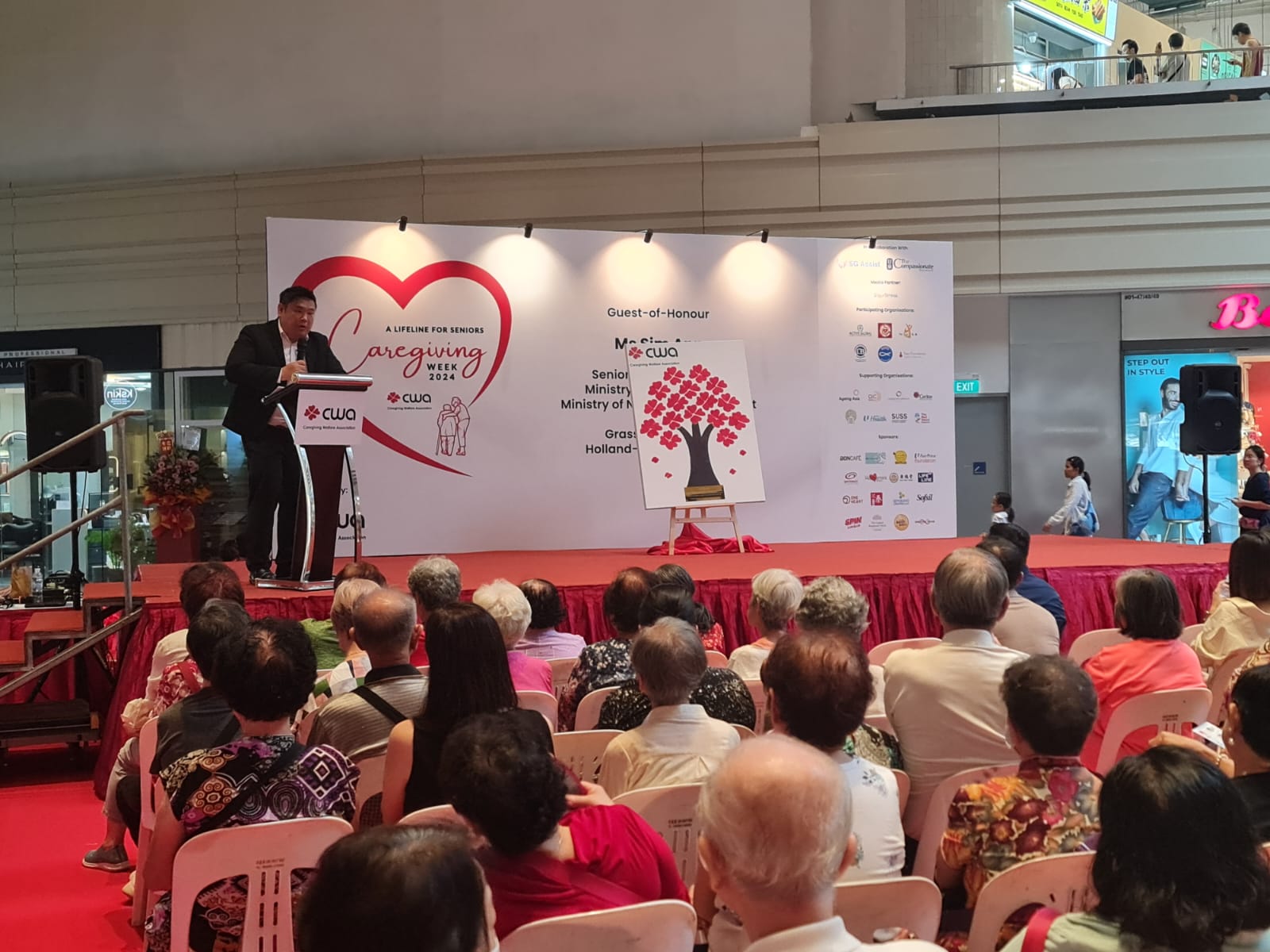Dr Tan Jit Seng was tasked to give the Keynote speech at CWA Caregiving Week 2024 event in Seng Kang Grand Mall on the 26th September 2024 in his capacity as the Vice President of Caregiving Welfare Association:
Speech: The Future of Caregiving in an Ageing Society
Good Morning everyone, and thank you for being here today.
Before I begin, I would like to extend my heartfelt gratitude to our esteemed Guest of Honour, Ms. Sim Ann, Senior Minister of State for Foreign Affairs and Ministry of National Development, for gracing this occasion with her presence. I would also like to thank Dr. Daniel Tan, President of the Caregivers’ Welfare Association (CWA), and Mr. Steven Yeo, Executive Director of CWA, for their dedication and leadership in advancing the caregiving community’s mission.
It is truly a privilege to be part of such an important dialogue on caregiving, and I am honored to share my thoughts on The Future of Caregiving in an Ageing Society with all of you today.
The Current State of Caregiving: A Fragile Ecosystem
As it stands, the bulk of caregiving responsibilities fall on families, charity organizations, and government services. While these pillars have been the foundation of caregiving, they are becoming increasingly strained. This model is not sustainable, and we need to rethink how caregiving is structured to meet the needs of an ageing society.
Today, I will focus on three key factors shaping the future of caregiving: the self, technology and infrastructure, and the community. These factors are interconnected, and addressing them can help us achieve three important goals:
- Compression of mobility – ensuring people experience fewer years of limited mobility at the end of life.
- Maintenance of function and prevention of functional decline – keeping older adults as independent as possible.
- Strengthening local support networks – fostering a "Kampung Spirit" through both human and technological solutions.
Factor 1: The Self – Caregivers and Care Recipients
The self encompasses both caregivers and care recipients. For caregivers, the focus must shift toward a preventive model, aiming to maintain function and prevent decline in older adults. Self-care is also vital for caregivers to avoid burnout and sustain their ability to care effectively.
For older adults, we aim for compression of mobility—reducing the years spent with physical limitations. This requires proactive care that keeps older adults active and engaged, minimizing the years spent in poor health.
Factor 2: Technology and Infrastructure – The Role of Innovation
The second factor is technology and infrastructure, which can play a transformative role in enhancing care. Here in Singapore, we are already witnessing some amazing innovations that support ageing in place:
- Prescience PresbyRobotics is developing empathic assistive robots designed for older adults, especially those living alone. These robots help with daily tasks and provide companionship, offering much-needed support for solo living.
- Elec.Net has been instrumental in creating smart homes that seamlessly monitor lifestyle and health conditions, providing real-time feedback to caregivers and ensuring safety for the elderly.
- SoundEye has made significant strides in fall and emergency monitoring devices. Their systems are being installed in homes, offering immediate alerts in case of accidents, which is especially critical for older adults living alone.
- HDB’s Enhance EASE program allows older adults to install assistive and safety features such as grab bars, ramps, and slip-resistant flooring in their HDB flats. These modifications promote safety and independence for ageing residents.
These technologies are helping us address both the compression of mobility and maintenance of function, ensuring that older adults can continue living in their own homes safely and comfortably for as long as possible.
Factor 3: The Community – Rebuilding the Kampung Spirit
The final factor is the community. We need to revive the Kampung Spirit, where caregiving was once a collective effort. By fostering local support networks, we can share caregiving tasks and reduce the burden on individual families. Technology plays a key role here too, connecting caregivers, volunteers, and local services to create a more distributed model of care.
Programs that encourage intergenerational engagement can also be beneficial, strengthening relationships between younger and older generations, and fostering a community spirit that promotes mutual support.
Achieving Our Goals
By focusing on the self, technology and infrastructure, and the community, we can achieve the three goals that will shape the future of caregiving:
-
Compression of mobility – through preventive care and assistive technologies, reducing the years of limited mobility.
-
Maintenance of function – by empowering caregivers and using smart technology to keep older adults independent for as long as possible.
-
Strengthening the local support network (Kampung Spirit) – through community-based care models and leveraging technology to create a more interconnected, compassionate system.
Conclusion: A Shared Future
In closing, caregiving in an ageing society will require us to rethink our current systems and embrace new ways of caring, both individually and collectively. The self, technology, and community must work together to build a caregiving model that is sustainable, compassionate, and ready for the future.
The challenges are significant, but with the support of government, organizations, and the community, we have the opportunity to create a more inclusive and supportive system for all.
Thank you.


